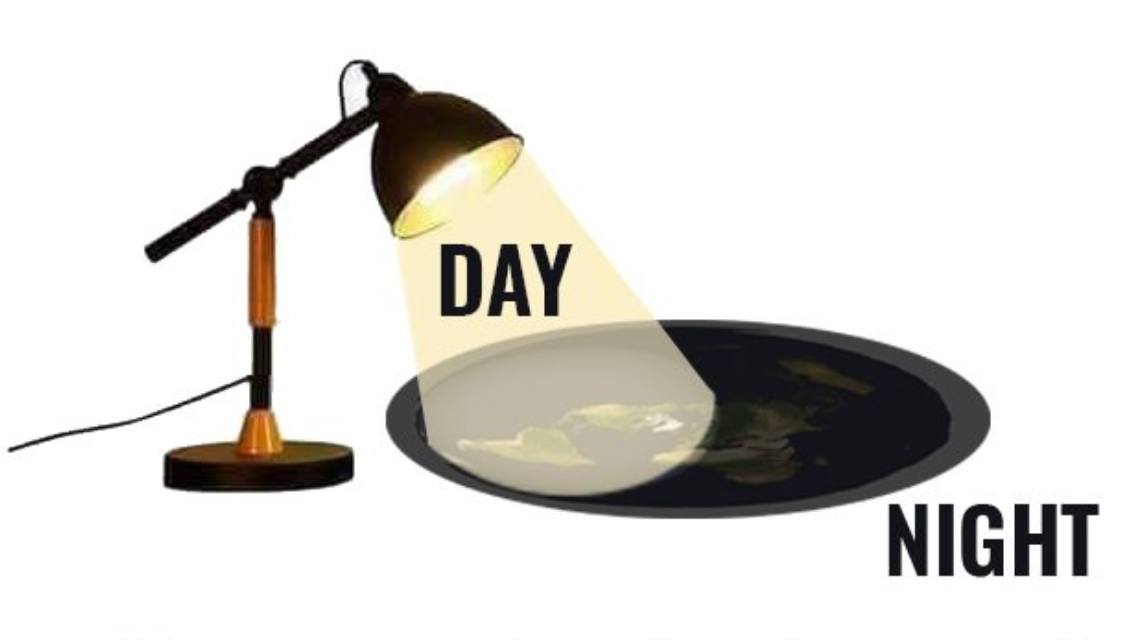In order for an actual sunset to happen in a flat earth, the sun would have to disappear beneath the surface of the Earth, meaning that the entire planet would be dark. As we know, this is not the case; some parts of the Earth are bright while others are dark. …
Several flat-earthers have suggested that the sun works like a flashlight, only directing light over a certain part of the earth at a time, like so:

This conception of day and night does not explain how the sun sets. If this lamp-sun conception were the case, you would be able to see the sun during the night. Its light just wouldn’t be shining on you. The sun would never set, because it would never drop below the horizon.
Another argument that flat-earthers have made is that the sun is only a few miles above the surface of the Earth and rotates around in a similar way to the animation above. The problem with this model is that the sun would remain extremely close to the horizon for most of the day, and that it would still be partially visible at night.
If the earth is flat, there is no explanation for why a) the sun sets and b) different parts of the earth are lit up at different times. Different arguments can explain one or the other, but no argument can explain why both of those phenomena occur.
See: Why The Earth Is Round — Debunking the biggest conspiracy theory on the globe
